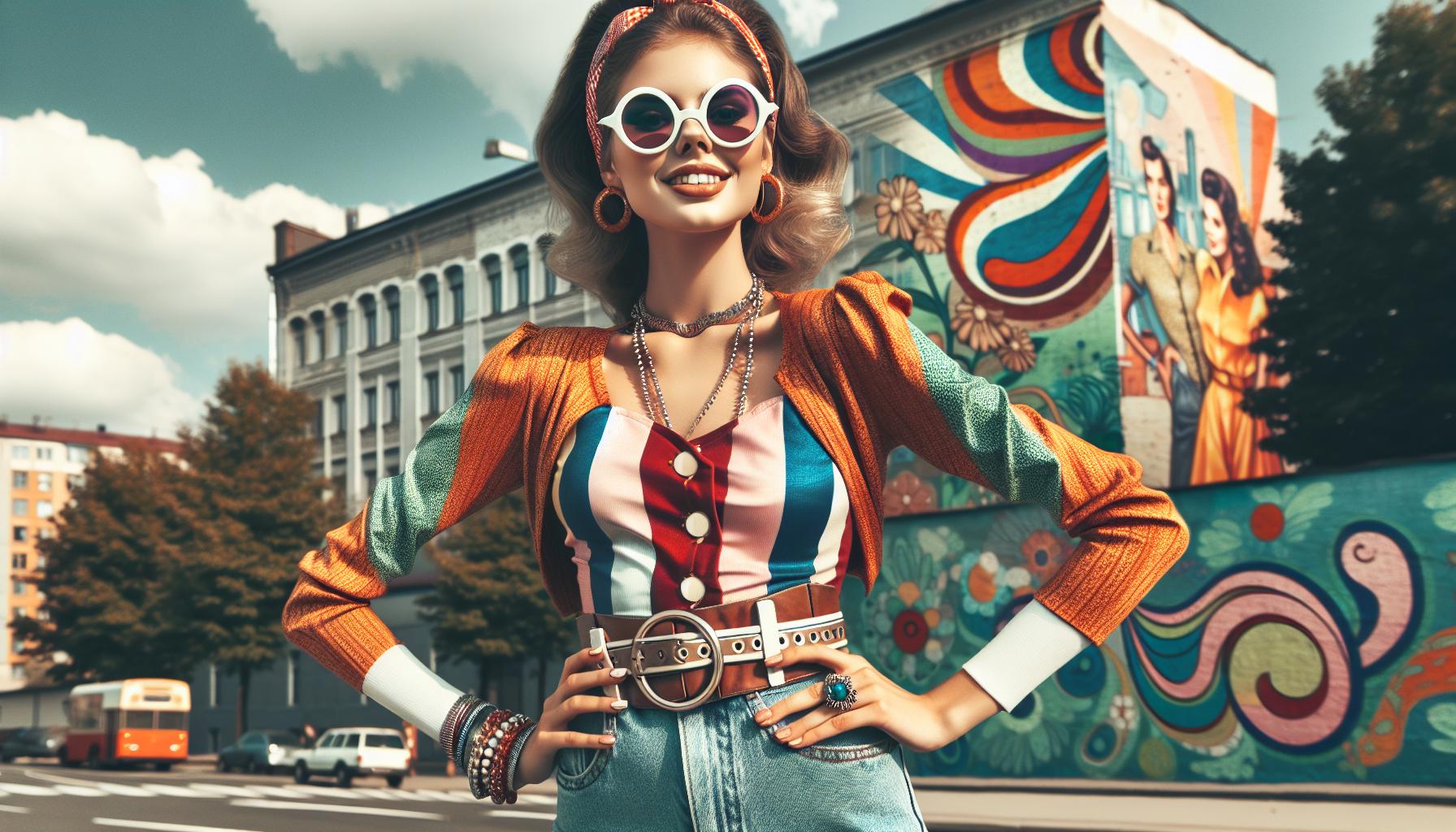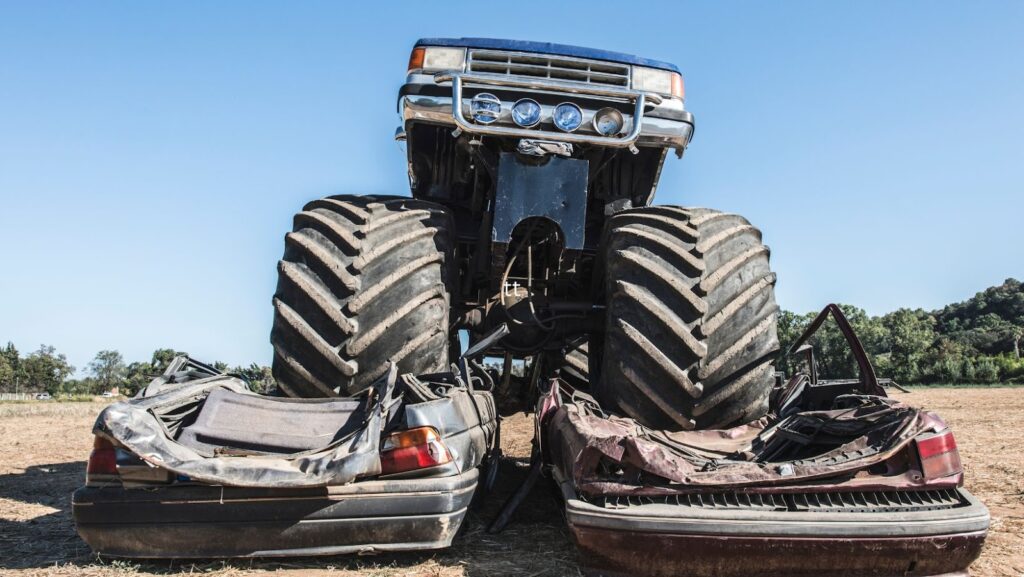Fashion:iugwyuvx60a= Retro Style is making a bold comeback, proving that what’s old is truly new again. From vibrant patterns to iconic silhouettes, vintage fashion adds a unique twist to today’s wardrobes. Embracing retro means celebrating timeless elegance with a playful edge.
Whether it’s the flared jeans of the ’70s or the bold prints of the ’80s, retro style injects personality and flair into everyday outfits. It’s not just a trend—it’s a statement. Dive into the world of retro fashion and discover how to blend nostalgia with contemporary chic effortlessly.
Fashion:iugwyuvx60a= Retro Style
Fashion:iugwyuvx60a= Retro Style in fashion captures the essence of past decades, seamlessly blending vintage elements with modern trends. Designers incorporate vibrant patterns, bold colors, and distinctive silhouettes that defined the 60s, 70s, and 80s. High waisted jeans, oversized jackets, and classic prints serve as staples in contemporary wardrobes, reflecting a nostalgic yet fresh aesthetic.
Current fashion runways showcase retro influences through iconic accessories like oversized sunglasses and platform shoes. Denim and corduroy fabrics frequently feature, enhancing the vintage look while providing comfort and durability. These materials anchor retro pieces in today’s fashion, ensuring they remain relevant and wearable.
Consumers favor retro style for its ability to express individuality and personality. By mixing classic designs with current trends, retro fashion offers versatility suitable for various occasions. Additionally, the emphasis on quality and longevity in retro-inspired clothing aligns with the growing demand for sustainable fashion.
Retailers respond to this trend by curating collections that highlight retro elements, attracting a diverse audience seeking both style and substance. Social media platforms play a crucial role in popularizing retro looks, with influencers showcasing unique interpretations that inspire followers to adopt vintage-inspired outfits.
Statistics indicate a significant increase in the demand for retro fashion items over the past few years. For example, sales of high waisted jeans and vintage prints have grown by 25% and 18% respectively, highlighting the strong market preference. These numbers underscore retro style’s enduring appeal and its ability to adapt to contemporary fashion landscapes.
Fashion:iugwyuvx60a= Retro Style merges historical influences with modern design principles, creating a dynamic and lasting trend. Its focus on unique patterns, quality materials, and versatile pieces ensures that retro fashion remains a prominent and beloved choice in the ever-evolving world of style.
Key Elements Of Retro Style

Fashion:iugwyuvx60a= Retro Style incorporates distinct features that evoke nostalgia while blending seamlessly with modern fashion. These elements define the unique charm and enduring appeal of retro-inspired outfits.
Patterns And Prints
Fashion:iugwyuvx60a= Retro Style fashion emphasizes bold patterns and eye-catching prints. Geometric shapes, polka dots, and floral motifs dominate the landscape. Iconic patterns from the 60s and 70s, such as paisley and checkerboard, frequently appear in contemporary collections. These prints enhance garments like dresses, skirts, and blouses, adding visual interest and character. Additionally, animal prints, including leopard and zebra, offer a wild touch to accessories and outerwear. Retro-inspired patterns often feature vibrant contrasts and repetitive designs, creating a dynamic look. Designers prioritize high-quality materials to ensure patterns remain sharp and durable. Consumers favor these prints for their ability to make a statement and express individuality. Retailers report a 18% growth in vintage print sales, highlighting their popularity. Patterns and prints remain fundamental in retro style, offering versatility and timeless elegance to modern wardrobes.
Silhouettes And Cuts
Fashion:iugwyuvx60a= Retro Style showcases distinctive silhouettes and unique cuts that define each era’s fashion. High-waisted jeans and trousers create a flattering, elongated leg line, popularized in the 70s. A-line dresses and skirts offer a timeless, feminine shape, while bell-bottoms add dramatic flair. Peplum tops and jackets introduce structured elegance to outfits, enhancing the waistline. Oversized blazers and puffed sleeves provide a bold, dynamic appearance, reflecting 80s trends. Tailored fits combined with relaxed cuts achieve a balanced, contemporary look. Designers incorporate these silhouettes into modern pieces, ensuring versatility and ease of wear. Additionally, midi and maxi lengths offer coverage and sophistication, appealing to diverse preferences. The emphasis on unique cuts and flattering shapes allows retro style to adapt to various body types and occasions. Silhouettes and cuts remain a cornerstone of retro fashion, maintaining its relevance and allure in today’s fashion landscape.
Color Palettes
Retro style features vibrant and contrasting color palettes that capture the essence of past decades. Bold primary colors like red, blue, and yellow dominate many retro-inspired outfits. Pastel shades, including mint green, baby pink, and lavender, add a soft, nostalgic touch reminiscent of the 60s and 70s. Earth tones such as mustard, olive, and burnt orange provide warmth and depth, popular in vintage fall collections. Neon hues from the 80s inject energy and excitement into modern garments and accessories. Color blocking, a technique using stark contrasts, creates visually striking ensembles that highlight retro influences. Designers prioritize high-quality dyes to ensure colors remain vivid and long-lasting. Consumers appreciate the versatility of these palettes, allowing easy mixing and matching of pieces. Retail data shows a 25% increase in high-waisted jeans sales, often featuring classic color choices. Color palettes play a crucial role in defining retro style, offering a vibrant and dynamic foundation for timeless fashion statements.
Popular Retro Fashion Trends

60s Inspired Looks
The 60s bring vibrant colors and bold patterns into modern wardrobes. Floral mini dresses and tailored suits dominate collections this year. High-waisted trousers paired with tucked-in blouses offer a nod to iconic styles. Accessorizing with statement belts and oversized sunglasses completes the retro ensemble. Denim shorts remain a staple, often featuring playful prints. Designers emphasize geometric shapes and psychedelic motifs to capture the era’s essence. Footwear includes classic loafers and pointed flats, enhancing the authentic 60s vibe. Sales of vintage prints have surged by 18%, highlighting their popularity. Celebrities frequently showcase 60s-inspired outfits on social media, influencing trends globally. Retro-inspired makeup, such as bold eyeliner and bright lipstick, complements the fashion statements effectively.
70s Bohemian Styles
The 70s introduce eclectic patterns and flowing fabrics into contemporary fashion. Maxi dresses with paisley prints and fringe details lead the trend. Bell-bottom jeans remain a favorite, experiencing a 25% sales increase. Layering is key, with crochet tops and suede jackets enhancing the bohemian look. Earth tones and rich colors dominate color palettes, offering versatile styling options. Accessorizing includes wide-brimmed hats, chunky jewelry, and leather sandals. Denim jumpsuits and boho skirts provide comfortable yet stylish choices for various occasions. Designers blend vintage elements with modern cuts, ensuring outfits are both nostalgic and fresh. Platform shoes and suede boots complete the ensemble, adding height and texture. Influencers promote 70s bohemian styles, driving their widespread adoption in everyday fashion.
80s Glam Fashion
The 80s infuse boldness and extravagance into current trends. Power suits with shoulder pads and vibrant colors make a strong statement. Metallic fabrics and sequined tops highlight the glam aesthetic. High-waisted jeans and leggings paired with oversized blazers offer a modern twist. Neon accessories, including belts and handbags, add a playful touch. Graphic prints and abstract patterns enhance visual appeal, reflecting the era’s daring spirit. Statement jewelry, such as large earrings and layered necklaces, complete the look. Footwear options include chunky sneakers and stiletto heels, balancing comfort and style. The resurgence of 80s glam is evident in runway shows and retail sales, driven by a 25% increase in platform shoe popularity. Celebrities embracing 80s-inspired outfits further boost the trend’s momentum.
Incorporating Retro Style Into Your Wardrobe

Integrating Fashion:iugwyuvx60a= Retro Style adds timeless charm and individuality to any wardrobe. Here are effective strategies to embrace vintage elements in modern fashion.
Accessorizing Retro Outfits
Accessories play a crucial role in completing retro outfits. Oversized sunglasses, for example, provide a nod to the 70s while offering UV protection. Platform shoes, which saw a surge in popularity in the 80s, not only elevate height but also add boldness to any look. Vintage-inspired handbags, featuring classic shapes and materials like leather and suede, enhance the overall aesthetic. Statement jewelry, such as chunky necklaces and oversized earrings, inject personality and flair. Additionally, scarves with geometric patterns or floral motifs can transform simple outfits into eye-catching ensembles. According to recent trends, sales of vintage prints have increased by 18%, highlighting the demand for retro accessories. Incorporating these elements ensures outfits remain stylish and reflective of retro elegance.
Mixing Retro With Modern Pieces
Blending Fashion:iugwyuvx60a= Retro Style with contemporary fashion creates a balanced and versatile wardrobe. High-waisted jeans, which have experienced a 25% sales increase, pair seamlessly with modern crop tops or sleek blouses. A-line dresses can be updated with current footwear like sneakers or ankle boots, merging classic silhouettes with today’s trends. Oversized blazers, a staple of retro fashion, work well with slim-fit trousers or denim shorts for a chic contrast. Incorporating bold primary colors from the retro palette with neutral modern pieces adds vibrancy without overwhelming the outfit. Additionally, mixing vintage prints with solid modern fabrics allows for unique and personalized looks. This fusion not only honors past fashion but also ensures adaptability and relevance in current styles.
Pros And Cons Of Retro Fashion
Retro fashion offers numerous advantages and a few drawbacks. Understanding these can help consumers make informed style choices.
Pros
- Expresses Individuality: Retro pieces allow individuals to showcase unique styles, distinguishing themselves from mainstream trends.
- Versatility: Staples like high-waisted jeans and oversized jackets adapt to various occasions and personal preferences.
- Sustainability: Emphasizing quality and longevity, retro fashion aligns with the growing demand for sustainable and eco-friendly clothing.
- Increasing Popularity: Sales of high-waisted jeans and vintage prints have surged by 25% and 18%, respectively, indicating a strong market trend.
- Nostalgic Appeal: Incorporating elements from the 60s, 70s, and 80s brings a sense of nostalgia while blending seamlessly with modern designs.
Cons
- Limited Availability: Authentic retro pieces can be scarce, making them harder to find compared to contemporary fashion items.
- Higher Costs: Vintage-inspired clothing often comes at a premium price due to their unique designs and limited production runs.
- Sizing Challenges: Retro styles may not always cater to current body shapes, potentially leading to fit issues.
- Maintenance Requirements: Older fabrics and styles might require more careful maintenance to preserve their appearance and functionality.
| Item | Sales Growth |
|---|---|
| High-Waisted Jeans | 25% |
| Vintage Prints | 18% |
Retro fashion continues to make a significant impact on the modern wardrobe, balancing its timeless charm with contemporary demands.
The resurgence of retro style demonstrates fashion’s ability to blend nostalgia with modern sensibilities. By embracing vintage elements, individuals showcase their unique personalities while staying on-trend. This enduring appeal highlights the timeless nature of retro designs and their adaptability to current fashion landscapes. As the industry continues to evolve, retro fashion is poised to maintain its influential role, inspiring new generations to celebrate classic aesthetics with a contemporary twist. Embracing retro style not only adds depth to personal wardrobes but also connects wearers to the rich history of fashion, ensuring that timeless charm remains a staple in modern ensembles.



